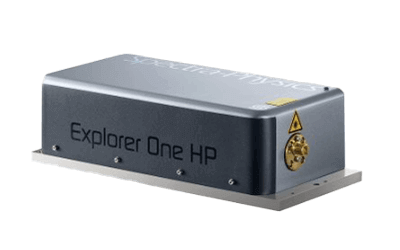What Is a DPSS Laser?

A DPSS (Diode Pumped Solid State) laser is a solid-state laser that utilizes a high-power semiconductor laser, known as a Laser Diode (LD), as its pump light source. LDs are advantageous because they can emit light at a single wavelength, are efficient at pumping, generate minimal heat, and have a long lifespan, resulting in a compact, lightweight, and durable laser system.
Uses of DPSS Lasers
DPSS lasers are employed in various fields due to their high-resolution capabilities. In biotechnology, they are used as light sources for confocal microscopes and DNA sequencing. In measurement applications, they serve as light sources for fluorescence spectrometers and Raman spectrometers, as well as in high-speed flow velocity particle measurement. They are also used for UV Raman spectroscopy and fluorescence imaging, especially the models with deep-ultraviolet single longitudinal mode output. Beyond measurement, DPSS lasers are utilized in laser processing, offering high output power and a compact oscillator.
Principle of DPSS Lasers
DPSS lasers typically comprise several key components: an LD as the excitation light source, a lens system for focusing LD light onto a laser crystal, a laser crystal for oscillation (commonly Nd: YVO4 or Yb: YAG), a nonlinear crystal (like KTP or BBP) for wavelength conversion, mirrors for resonance between the laser and nonlinear crystals, and a lens to collimate the output beam.
For instance, using Nd: YVO4 as the laser crystal, it can be excited by an 808 nm LD to emit 1064 nm infrared light. This infrared light can be converted into 532 nm green laser light by KTP. Furthermore, using BBP as another nonlinear crystal, the 532nm light can be transformed into 266nm UV laser light. This allows DPSS lasers to produce UV and visible light at various wavelengths through wavelength conversion.